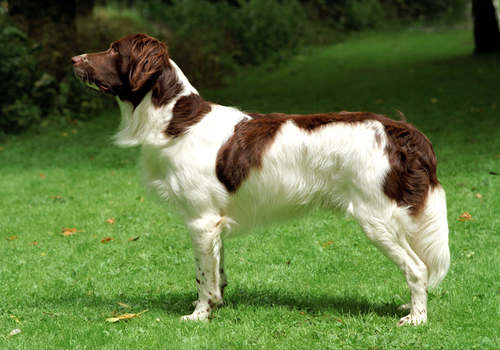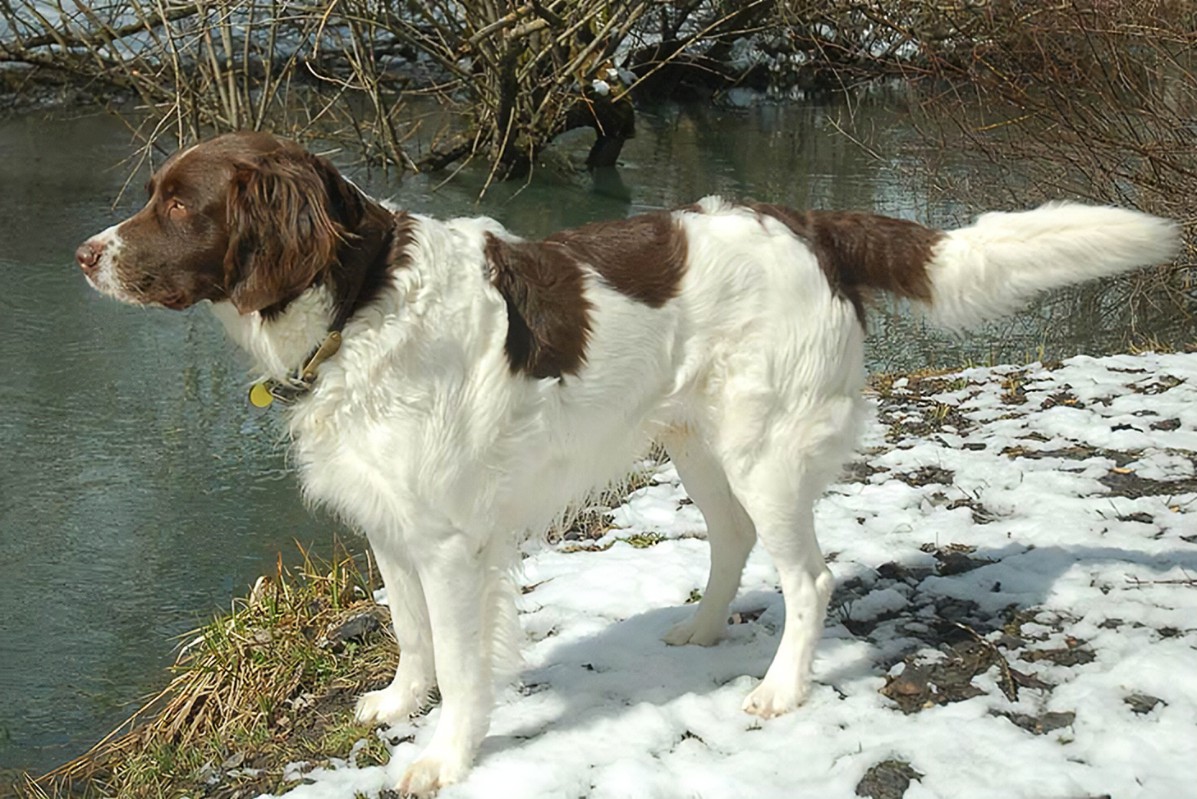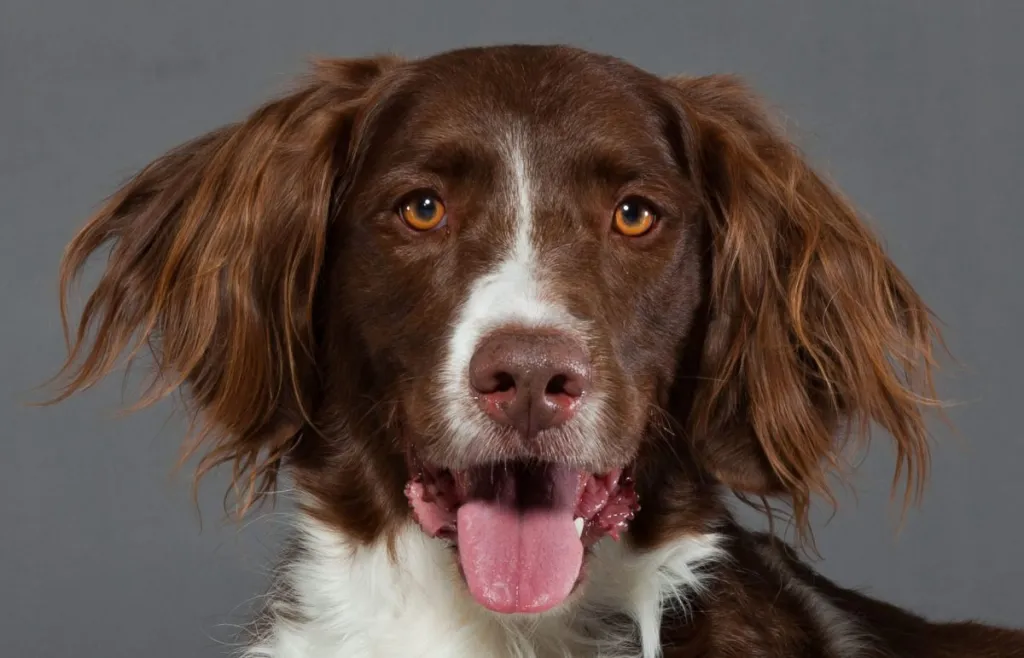Drentsche Patrijshond: The Loyal and Versatile Dutch Hunting Companion

History of the Drentsche Patrijshond
The Drentsche Patrijshond (pronounced DREN-cha puh-TREYS-hond), also known as the Drent or Dutch Partridge Dog, hails from the province of Drenthe in the Netherlands, where it has been a prized all-purpose hunting and farm dog for over 400 years. This breed was developed from spioenen (spaniel-type dogs) brought from France and Spain in the 16th century. It was traditionally used by rural farmers who needed a versatile dog capable of hunting birds, guarding property, and serving as a loyal companion.
The Drent was officially recognized by the Dutch Kennel Club in 1943, and by the Fédération Cynologique Internationale (FCI) shortly after. Though it remains relatively rare outside the Netherlands, its popularity is growing in the United States, Canada, and parts of Europe among hunters and families who appreciate its versatility and friendly demeanor.
Popularity of the Drentsche Patrijshond
While not yet widely known, the Drent is gaining attention in hunting and sporting dog circles for its trainability, adaptability, and excellent temperament. Its family-friendly personality, combined with its skill in the field, makes it a favorite among active households, upland hunters, and those seeking a less intense alternative to high-energy sporting breeds.
Physical Traits of the Drentsche Patrijshond
The Drent is a medium-sized, athletic, and well-proportioned dog with a gentle expression and a distinctive white-and-brown coat.
• Coat: Dense, slightly wavy to straight, with feathering on the ears, legs, and tail. Weather-resistant and suited for both field and home life.
• Color:
o White with brown markings, often with ticking or roaning.
• Size:
o Height: 21.5–25 inches (55–63 cm)
o Weight: 45–73 lbs (20–33 kg)
• Head & Expression: Broad, slightly domed skull with a strong muzzle and soft, alert eyes.
• Ears: Set high, broad at the base, and carried close to the head—well feathered.
• Tail: Carried in a gentle curve and well feathered.
• Body: Strong and balanced, built for endurance and agility, with a deep chest and well-muscled limbs.
Behavioral Traits of the Drentsche Patrijshond
The Drent is a sensitive, loyal, and versatile breed, combining the traits of a gentle family dog with a dedicated field worker.
• Affectionate and Loyal: Forms strong bonds and thrives on companionship—wants to be close to its people.
• Gentle and Patient: Great with children and other pets, especially when socialized early.
• Trainable and Intelligent: Learns quickly, but responds best to positive, reward-based training.
• Energetic but Balanced: Needs daily exercise but settles well indoors—not hyperactive like some other hunting breeds.
• Instinctive Hunter: Excellent at pointing, retrieving, and tracking, especially for upland game.

Why Choose a Drentsche Patrijshond?
The Drent is perfect for active families, hunters, and outdoor enthusiasts looking for a gentle, devoted, and all-purpose dog.
• All-in-One Dog: Capable of hunting, guarding, and cuddling in the same day.
• Ideal Family Companion: Gentle, stable, and affectionate—excellent with kids.
• Beautiful and Unique: Striking coat and a kind, expressive face.
• Adaptable Lifestyle: Works well in rural, suburban, or active urban environments.
• Loyal Homebody: While skilled in the field, the Drent prefers being near its family and is not prone to wandering.
Caring for Your Drentsche Patrijshond
The Drent thrives in environments where it receives daily interaction, purposeful activity, and a loving routine.
• Training:
o Intelligent but sensitive—avoid harsh corrections.
o Early training builds confidence and cooperation.
• Exercise:
o Needs moderate to high daily activity—hikes, runs, or long walks.
o Loves interactive games, scent work, and field drills.
• Grooming:
o Brush 2–3 times a week to prevent mats in feathered areas.
o Clean ears regularly and trim nails as needed.
• Nutrition:
o A balanced diet formulated for sporting or medium active breeds.
o Monitor weight—Drents can be prone to overindulging if under-exercised.
• Living Environment:
o Best with access to a yard or frequent outdoor time, but calm and clean indoors.
o Doesn’t do well with long hours of solitude.

Health Considerations
The Drent is generally a healthy and robust breed, with relatively few known hereditary conditions. Potential issues include:
• Hip Dysplasia
• Ear Infections (due to floppy ears)
• Progressive Retinal Atrophy (PRA) (rare)
• Obesity (if under-exercised)
With proper care, Drents can live 12–14 years, remaining healthy and active well into their senior years.
Comparisons to Other Sporting Breeds
Compared to the English Springer Spaniel, the Drent is more relaxed indoors and has a stronger protective instinct. Unlike the German Shorthaired Pointer, it is less intense and more family-focused, while still being an effective hunting partner. It shares similarities with the Small Münsterländer, but the Drent tends to be calmer and more emotionally intuitive.
Is the Drentsche Patrijshond Right for You?
This breed is ideal for families, hunters, or outdoorsy individuals looking for a kind, balanced dog that’s just as happy retrieving game as it is lying at your feet. It thrives on inclusion, training, and affection.
If you need a low-maintenance dog that can be left alone for long hours or don't enjoy regular outdoor activities, the Drent may not be the best fit.
Ready to Welcome a Drentsche Patrijshond?
United Pet Club is here to guide you in discovering and caring for the Drentsche Patrijshond. We offer support in finding reputable breeders, training tips, and health care guidance so you can enjoy the many gifts this charming Dutch breed has to offer.
